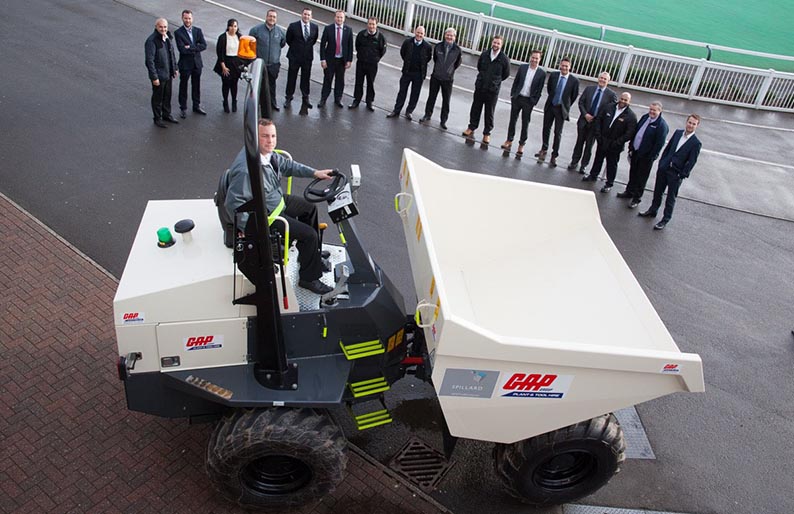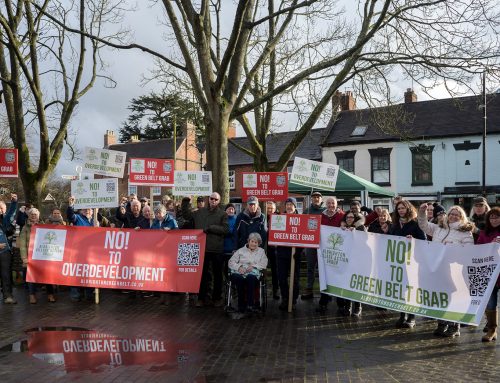Closer collaboration between all levels of the plant and construction supply chain could hold the answer to removing blind spots that cause numerous injuries and fatalities every year.
This became apparent during the launch of Spillard Safety Systems’ latest objection detection system and was followed by a debate involving plant hire firms, vehicle manufacturers and major civil engineering and construction companies.
More than 30 people attended the unveiling of ‘VCAS 300’ and were given the opportunity to feedback on the new technology and engage in discussion about how the sector can improve safety at sites across the UK.
Delegates from Balfour Beatty, BAM, Morgan Sindall and GAP agreed that a more joined-up approach was needed to improve operator visibility, including better driver training, efficient installation processes, a willingness to pay more for advanced equipment and longer warranties.
“It’s very rare that you get so many tiers of the supply chain in one place at the same time,” explained Peter Spillard, Managing Director of Spillard Safety Systems.
“The demonstration of ‘VCAS 300’ and our blind spot mat really got people talking openly about the issue and how industry can play its part in reducing injuries and fatalities that occur due to poor visibility.”
He went on to add: “There was a real transparency at the event and people were happy to share experiences and best practice. It certainly seemed like there was a willingness to work together to improve the situation.
“This was evident in the eye-opening presentations by Steve Jarvis (BAM) and Brian Hume (Balfour Beatty), which provoked a lot of interesting debate among guests and a commitment to take a more collaborative approach in the future.”
Spillard has spent more than £30,000 and hundreds of hours on R&D in enhancing ‘VCAS 300’ to include a number of new features, such as a 4-metre vision field, warning lights for each main sensor for quicker identification of possible objects and a new ultrasonic tip sensor.
Bosses at the West Midlands-based firm expect sales to reach more than £350,000 in its first year, with
interest already secured from the plant industry, highways and civil construction sectors.
Peter picked up the story: “We tasked our experts to come up with adaptable technology that could include extra speech alerts or warnings. There is also a night silent function, seatbelt warning, an even deeper viewing field (extended by 2 metres), an inclinometer to warn when a vehicle has reached its recommended inclination and a trio of warning lights to immediately tell you where the danger is located.”
He continued: “These advancements mean VCAS 300 will help to remove even more blind spots and increase awareness on construction site dumpers.
“This will hopefully mean fewer injuries and deaths on site and should also help firms to reduce insurance premiums, as they are taking every measure possible to protect the workforce and the public.”
Brian Hume, Health and Safety Manager at Balfour Beatty (Scotland Transerv), added his support:
“We’ve been working with Spillard Safety Systems since 1998 when the PUWER regulations first came in and have continued to invest in new solutions to blind spots ever since.
“VCAS 200 was a major step forward for industry, but there is still a lot of work that needs to be done and VCAS 300 is another step in the right direction.
“Technology is one answer to safety on site. The whole industry has a role to play – manufacturers, plant hire specialists, new solution providers – and this event has been a great forum for provoking discussion and getting all sides to put their thoughts across.”
The VCAS 300 launch caps a successful 2015 for Spillard Safety Systems, which employs 25 people at its R&D and manufacturing base in Four Ashes.
Demand for the firm’s new camera systems and digital video recorders has grown significantly as customers strive to reduce accidents, injuries and avoid expensive insurance claims.
For further information, please visit www.spillard.com, contact 01902 797930 or follow @spillardsafety on twitter






